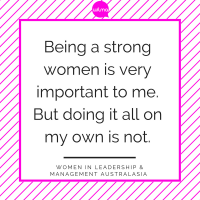We know that we need to act on gender diversity. We know that the workforce could be improved in a multitude of ways if we did. We know that women improve the performance of companies, both at a board level and at an operational level. We do not need to see any more statistics or research on this. What we do need is some action.
Last October, Diversity Network ran two workshops in Perth. One on Unconscious Bias and one on Flexible Work. (Yes, this was a while ago, and yes, we need to run more!) In our opinion, these are the two biggest levers that will shift things within the workforce and create real change.
Issues for individuals in the workforce
Challenges in the workforce do not exist for women alone. Let’s get that clear from the outset. There are different challenges across different business sectors/disciplines, different challenges within each individual company, and unique challenges within each division/area/site/unit of a company or business.
What is clear, however, is that lack of employment flexibility is having a negative impact on work generally, and this is hitting women especially hard, which in turn is having a negative impact on businesses.
Long gone are the days of Dad going out to work, and mum staying home. We must move past this archaic mentality and think to the future.
As we progress through our technologically driven world we need to move further towards adopting agile work practices that enable all individuals to work in an effective, efficient and productive manner. The Gen Z’s are coming, and we need to get with it. I suggest we focus on the following two priority points: flexible workplaces; and better leadership.
What needs to happen to make flexibility a reality?
1. Men must be allowed to work flexibly along with women
2. Management/Leaders must trust their employees
3. Management must lead by example (if you have to be in office 12 hours a day, perhaps you are not working in an efficient and productive manner)
4. We must focus on outputs rather than time spent ‘in the chair’
5. We must move away from the current model of Time on the Job = Promotion(you may have been doing a job for 20 years, but it does not guarantee that you are good at it)
6. We must stop working 50-60 hours per week
Yes, I realise that working flexibly is not possible for all roles. With many roles you must physically be ‘on the job’ (nursing, mining operators, couriers, doctors etc), but within the working day we need to TRUST that our employers are doing the right thing. Out with micromanaging, in with positive leadership.
If we do not get with the times, the issues of gender disparity in senior, executive and board roles will not be rectified. We must move away from the current model of thinking that says time on the job equals promotion. We must move away from the assumptions that time on the job equals competence. We must improve workplace flexibility for all.
A key recommendation
I am going to propose the following for Australian workplaces. Let’s stop with the crazy mentality that 50+ hours per week ‘on the job’ will get you promoted. Let’s stop with the ‘you must be here by 8am and you may leave at 5:30pm, yet I don’t really care what you do in between’ mentality.
Let’s do this by taking small steps.
Twice a week, your full time employees can leave the office at 2:45pm.
Yes, that’s right. Your employees may want to go to the dentist, pick the kids up from school, do a yoga class, go for a run, go the chiropractor, sit under a tree – whatever.
My prediction is that the following will occur. Your employees will be happier, healthier, less stressed, more productive, more engaged, feel more valued and you will have more females keen to join your group.
If you are a leader, I challenge you to do this. Have confidence in your staff. Trust that they will produce results in their own time. The world is a changin’ and we need to move with it.
This article was originally published on Smart Company 21st July 2015. Read the original article here.









Leave A Comment